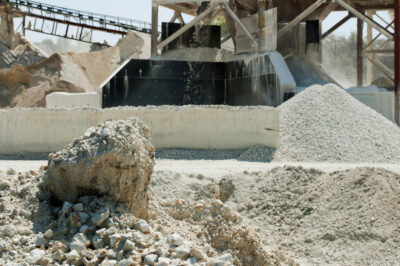An Alternative to plastic could certainly help us preserve our landfill space and clean up our oceans. We have written previously about the dangerous plastic pollution of the ocean. It can be very depressing to consider how much plastic we ingested in the shrimp we ate last night.
Likewise, we grieve for the creatures of the sea. They are suffocating in gelatinous refuse drifting from our plastic islands.
Alternative to Plastic: Japan Begins to Emerge from the Plastic World

Even Paper Can Be Made From Sheets of Limestone With Special Japanese Technology.
In this blog, we whisk our viewers off to Japan to see how the country is currently developing an alternative to plastic. Japan has had a long cultural romance with plastic. Therefore, research and product development of an alternative to plastic has been slow. But it is gaining momentum, as is their ecological conscience, even as we post this story.
Finding an Alternative to Plastic Wrappings
You might not realize that packaging is very important in Japanese culture and aesthetics. Were you to shop in a Japanese store you would immediately recognize this. Individually wrapped items abound. It is integral to the quality and value shoppers place on goods.
The customs of such Individually and intricately wrapped products are simply unsustainable. Japan’s people and paper producers have begun to realize this. Now, they are creating “innovative ways to eliminate plastic waste and take a more environmentally-friendly route in shipping and packing.”
Saving the World With an Alternative to Plastic Packing Crates and Boxes
For example, Nippon Paper Industries’ subsidiary has created an innovative waterproof box for use instead of polystyrene boxes. “It can keep water from leaking for as long as 3 weeks.”
Yet it is totally sustainable and biodegradable and nicely recyclable. Nippon Paper adds, “ It is already being used by food processing companies to transport fish, but there are other possible uses, such as fashion.”
Taking Plastic “Off the Hook” With the Daio Paper Corporation
Also reported by Fashstyle.net, Daio Paper Corporation has developed paper alternatives to plastic hooks and hangers. They make them with super-high-strength paper.
Showing its commitment to ecology, Daio recycles its own waste pulp. They put it into substances used in construction, land reclamation, and cement.
From Rocks to Plastic Alternatives: Innovations at the TBM Company

Compared to Petroleum, Limestone is Much Easier and Quicker to Mine. And It’s Also Kinder to the Environment.
At TBM Company, the research and development of sustainable products is the heart and soul of the company culture. They constantly work not only at the research, development of alternatives to plastic, but at the “production and sales of environmentally friendly materials and products.”
This is a company that has found the secrets of plastic alternatives in common stone. Incredibly, their alternatives to plastic begin with common limestone.
Limestone is a very sustainable resource, powerfully available in most countries, even in Japan. TBM has capitalized on the manufacture of paper from limestone. Hence, their product is named Limex.
Limestone: Sustainable, Superior, and Stable
Manufacturers create petroleum-based resin for casting and molding all manner of plastic objects. They do this in a rather dirty method, by the “fractional distillation of crude oil and naphtha and polymerizing the extracted monomers.” Manufacturers employ this procedure to procure the raw material for plastic cups, cell phone covers, dishware, and other objects. As a result, energy (heat) impacts our environment in the form of heat.
However, calcium carbonate, which is the main raw material of LIMEX, comes from the crushing of limestone. Thus, “the Limestone can reduce CO2 emissions by about 50 times compared to petroleum-based resins.” Therefore, another way to put it is that it emits 1/50th of the amount of CO2 in comparison to the creating petroleum-based plastic.
Limex Developers Touting Price and Stability of their Limestone Alternatives to Plastic
It doesn’t take a genius to recognize it’s much easier to mine and process limestone than petroleum or metal. Likewise, its very abundance makes it inexpensive. Limex also holds up well against environmental factors although it is very recyclable. Unlike some plastic and rubber, Limex does not deteriorate easily in sunlight.
And LIMEX can be extruded, shaped, molded, and sheeted just like plastic and paper. Limex experts state, “LIMEX is suitable for diverse molding methods including injection molding, extrusion molding, vacuum molding, and blow molding.”
And they add, “Though LIMEX is a composite material, it does not require custom equipment and can be processed using traditional methods and machinery.”
At Consolidated Waste Systems, we may sound like we are marketing LIMEX. We are not. However, we are very impressed with the plastic alternatives now being developed by LIMEX and other Japanese Companies.
The LIMEX Recipe for an Alternative to Plastic

Limestone Is a Secret of the Earth. And It Could Provide an Alternative to Other Items, Currently Made of Plastic.
We have hinted at the steps in processing LIMEX, but let us give you some specifics about manufacturing this marvelous alternative to Plastic.
- It is “an advanced material produced from calcium carbonate (CaCO3)…’
- Initially, the manufacturer crushes the limestone.
- And then adds “a small amount of polymeric resin added as a binder…”
- Next, the mixture is heated, and kneaded in a “twin-screw extruder…”
- Now, we cannot tell you all the secrets of the process. But after heat, pressure, and proprietary treatment, the manufacturers at TBM create pellets of sheets from the molten mass above.
- Finally, the pellets or sheets are ready to be transformed into multiple consumer products.
LIMEX pellet is manufactured by pelletizing, the process of molding the molten composite into the shape of a pellet. LIMEX pellets are also manufactured by pelletizing edge waste produced through the manufacturing and printing process or used LIMEX sheets collected from consumers.
Since the amount of petroleum-based resin contained in conventional plastic products can be reduced, LIMEX is used as a material to “reduce plastic”.
With a sheeting process, they can even make paper from the limestone mixture.
Alternative to Plastic: Inspiration for International Patents for LIMEX
It was way back in 2014 when LIMEX was patented in Japan. Now, that the company has submitted the basic patent in over 40 countries worldwide. The company is growing.
Limex and the company, TBM, have won many international awards. And UNIDO (United Nations Industrial Development Organization) has recognized them as sustainable and excellent technology from Japan.
TBM decided, “We will export the LIMEX technology and brand as a new Japanese technology so that LIMEX becomes a material used commonly in the world.”
Terrific Takeaways from Alternative Plastic Technology in Japan

Cleaner, Clear, Pollution Free Future: Only Achieved By Finding Alternatives to Plastic.
In spite of its past history of plastic fascination, we believe many Japanese companies are moving on to create sustainability and recyclability. They are revolutionizing the creation of everyday products. Previously, manufacturers made all of those objects, from your teacup to your smartphone with petroleum-based plastic.
It could be possible that innovative companies like TBM and products like LIMEX are the keys to the future. And keys such as these will unlock the secret of the stones to save the world from plastics.
With a touch of whimsey, we add that we could be on the verge of a new and prosperous Stone Age with limestone at its heart. And TBM has proven we can find alternatives for plastic in very unique places, like old limestone quarries.
In short, waste management systems can only handle so much plastic. We must help industries find low-cost sustainable alternatives. Only then, can we save the future of our oceans and forest.
Thank you for reading the Consolidated Waste System’s blog as we highlight the journey to a waste-free economy.


